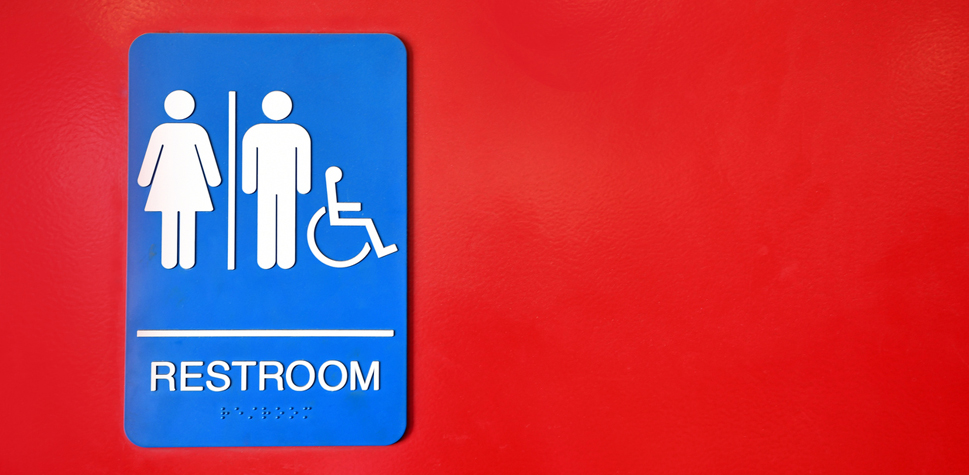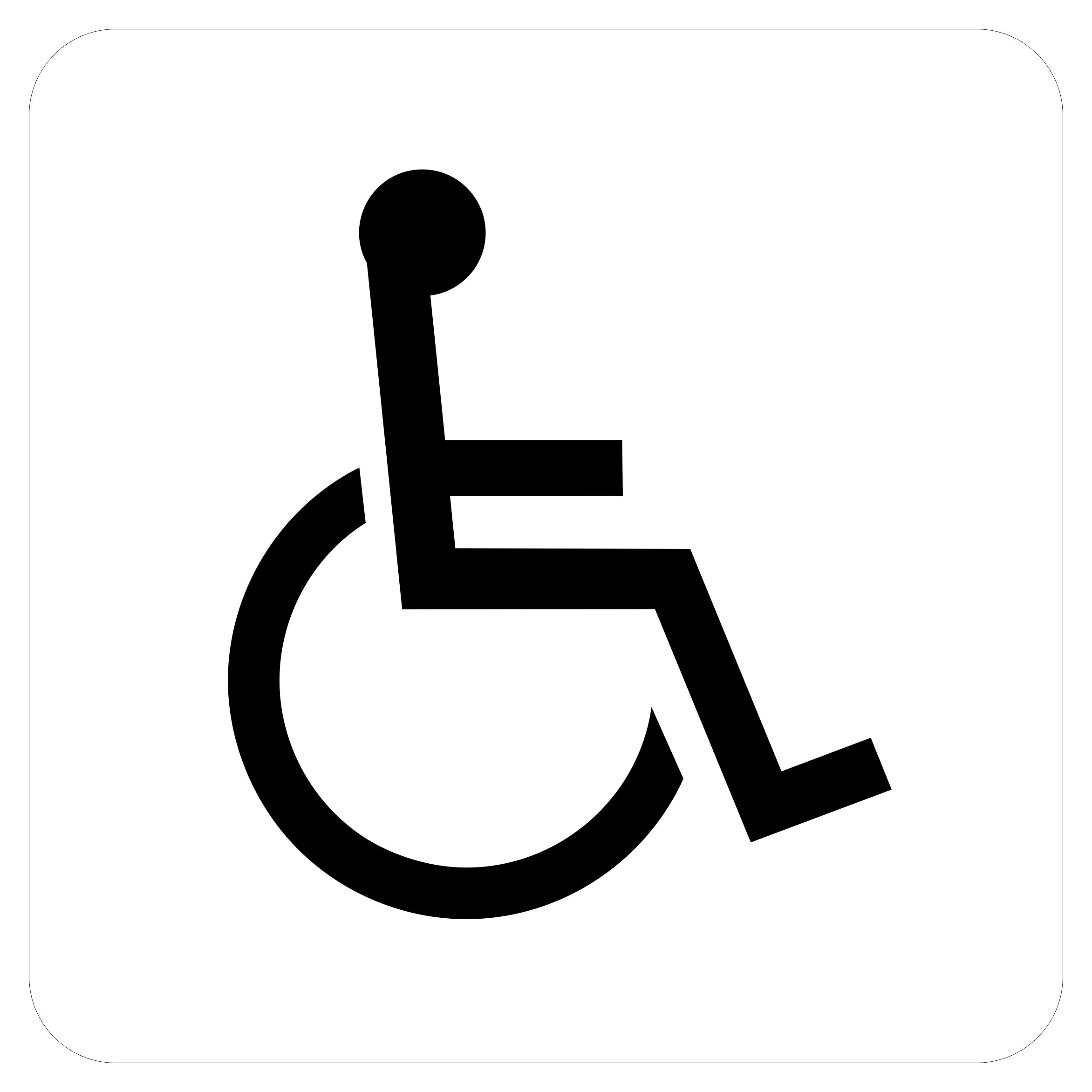ADA Signs: Crucial Tools for Inclusive Environments
ADA Signs: Crucial Tools for Inclusive Environments
Blog Article
Exploring the Trick Functions of ADA Indicators for Improved Ease Of Access
In the realm of accessibility, ADA indicators serve as quiet yet effective allies, ensuring that rooms are comprehensive and accessible for people with specials needs. By incorporating Braille and responsive aspects, these indications break obstacles for the visually impaired, while high-contrast color schemes and legible fonts cater to varied visual needs.
Significance of ADA Compliance
Guaranteeing compliance with the Americans with Disabilities Act (ADA) is crucial for cultivating inclusivity and equivalent access in public areas and workplaces. The ADA, enacted in 1990, mandates that all public centers, employers, and transport solutions suit individuals with disabilities, ensuring they take pleasure in the exact same civil liberties and chances as others. Compliance with ADA requirements not only meets legal obligations yet also boosts an organization's credibility by showing its commitment to diversity and inclusivity.
One of the vital facets of ADA compliance is the application of accessible signage. ADA indicators are made to ensure that people with impairments can easily navigate via spaces and buildings. These indications must abide by certain standards concerning dimension, typeface, color contrast, and positioning to assure visibility and readability for all. Appropriately applied ADA signs helps eliminate obstacles that people with impairments commonly encounter, therefore promoting their self-reliance and confidence (ADA Signs).
Furthermore, sticking to ADA regulations can reduce the threat of lawful effects and potential penalties. Organizations that stop working to abide with ADA guidelines may encounter legal actions or penalties, which can be both harmful and economically burdensome to their public image. Thus, ADA conformity is integral to promoting a fair setting for every person.
Braille and Tactile Aspects
The consolidation of Braille and tactile aspects into ADA signs symbolizes the concepts of ease of access and inclusivity. It is normally positioned under the matching message on signage to guarantee that people can access the information without visual assistance.
Tactile components extend past Braille and include increased icons and characters. These components are designed to be noticeable by touch, permitting people to recognize area numbers, washrooms, departures, and other vital areas. The ADA establishes specific guidelines relating to the size, spacing, and positioning of these responsive aspects to optimize readability and ensure consistency throughout various atmospheres.

High-Contrast Color Design
High-contrast color pattern play an essential function in enhancing the presence and readability of ADA signs for individuals with visual impairments. These plans are necessary as they make the most of the difference in light reflectance in between message and history, making sure that indicators are easily discernible, even from a distance. The Americans with Disabilities Act (ADA) mandates the use of specific shade contrasts to accommodate those with minimal vision, making it a critical element of compliance.
The efficacy of high-contrast colors hinges on their capacity to stick out in numerous lighting conditions, including poorly lit settings and locations with glow. Commonly, dark text on a light background or light text on a dark history is used to achieve ideal Related Site contrast. For example, black message on a white or yellow history offers a plain aesthetic distinction that helps in fast acknowledgment and comprehension.

Legible Fonts and Text Size
When considering the style of ADA signs, the option of understandable fonts and ideal text size can not be overemphasized. The Americans with Disabilities Act (ADA) mandates that typefaces have to be sans-serif and not italic, oblique, manuscript, extremely decorative, or of unusual form.
According to ADA guidelines, the minimal message height need to be 5/8 inch, and it needs to raise proportionally with viewing range. Consistency in message dimension contributes to a cohesive visual experience, aiding people in navigating atmospheres efficiently.
In addition, spacing in between letters and lines is indispensable to readability. Adequate spacing protects against characters from showing up crowded, improving readability. By sticking to these standards, designers can dramatically boost accessibility, making sure that signage serves its intended purpose for all people, no matter their visual capacities.
Effective Placement Approaches
Strategic positioning of ADA signs is crucial for optimizing availability and making sure compliance with lawful criteria. ADA guidelines specify that indications ought to be installed at an elevation in between 48 to 60 inches from the ground to ensure they are within the line of sight for both standing and seated check my source individuals.
In addition, indicators need to be put nearby to the lock side of doors to enable easy identification before entry. This positioning helps people situate areas and rooms without obstruction. In situations where there is no door, signs need to be positioned on the closest adjacent wall. Consistency in indication positioning throughout a center enhances predictability, reducing confusion and improving total user experience.
Verdict
ADA indications play a crucial function in advertising access by incorporating features that resolve the needs of individuals with specials needs. Integrating Braille and tactile elements makes certain crucial information is this post accessible to the aesthetically damaged, while high-contrast shade plans and legible sans-serif fonts boost presence throughout numerous lighting conditions. Reliable placement strategies, such as proper placing heights and critical locations, further facilitate navigation. These elements collectively cultivate an inclusive setting, emphasizing the relevance of ADA conformity in making certain equal access for all.
In the realm of access, ADA indicators offer as quiet yet effective allies, making sure that spaces are navigable and comprehensive for individuals with disabilities. The ADA, passed in 1990, mandates that all public facilities, companies, and transportation solutions fit individuals with handicaps, guaranteeing they appreciate the exact same legal rights and opportunities as others. ADA Signs. ADA indications are developed to ensure that individuals with handicaps can quickly browse through buildings and areas. ADA standards stipulate that indicators ought to be installed at a height in between 48 to 60 inches from the ground to guarantee they are within the line of sight for both standing and seated people.ADA indicators play an important role in promoting accessibility by integrating attributes that address the requirements of people with handicaps
Report this page